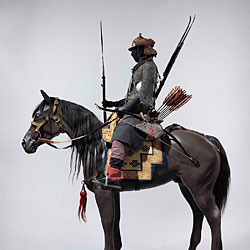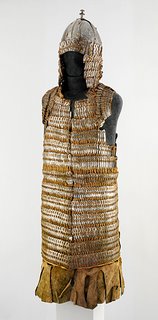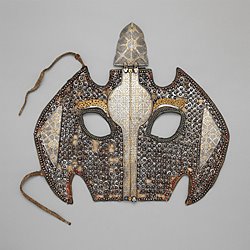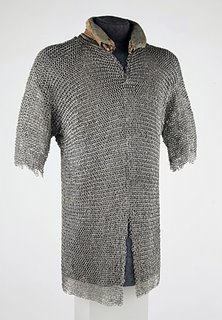Recognize This Man? The Art World Doesn't

The photographers were ecstatic. There they were, squeezed into a corner at the back of Sotheby's salesroom on Wednesday night — penned as far as possible from where the big buyers sit — when a mystery man brazenly raised his paddle, again and again.

Sotheby's auctioneer Tobias Meyer takes a bid on Picasso's "Dora Maar With Cat" on Wednesday night.
Yesterday that man's face was being sent by e-mail around the world, as art dealers and collectors frenziedly speculated on his identity. He ended up spending $102.7 million, including a dizzying $95.2 million for a 1941 Picasso portrait, "Dora Maar With Cat." That was the second-highest price ever paid for an artwork at auction, after "Boy With Pipe (The Young Apprentice)," a 1905 painting that brought $104.1 million at Sotheby's in May 2004.
But who was he? Sotheby's has refused to say. It is unclear whether he was acting for a client or buying for himself.
In art world watering holes up and down Madison Avenue yesterday, everyone had a theory about his identity, whether he was a Russian or Asian billionaire or an American hedge fund manager. "People may never find out who he is," said Rachel Mauro, a Manhattan dealer. "It could be one of those great mysteries."
Experts from Christie's who were standing in the back of the salesroom on Wednesday evening said they did not recognize the buyer, and to the best of their knowledge, he had not been to previews of their sale, nor had he been seen at Christie's Impressionist and Modern art auction on Tuesday night. They too are trying to discover who the big spender is, in hope of luring him to their sales next season.
Those who sat near him at the auction said that they were convinced that he sounded Russian. There were also clues to support that theory. At the big auctions in London in February, a group of Russia's new rich drove up prices for masters like Gauguin, Warhol and Lucian Freud.
Then there is the matter of taste. In addition to the Picasso, the buyer bought an 1883 Monet seascape for $5 million. That told the art world's self-appointed sleuths nothing. More revealing was the purchase of a painting by the Russian-born master Chagall, a 1978 biblical scene, for which the man paid $2.5 million. Russians more than any other nationality are buying Chagalls right now.
A lot of names are being bandied about. Some of the Russian oligarchs who have been buying art recently are Pyotr Aven, the president of Alfa Bank; Viatcheslav Kantor, the real estate and fertilizer tycoon; and Roman Abramovich, the oil exporter who owns the Chelsea Football Club in London.
Officially, Sotheby's is declining to comment, but its executives were obviously caught off guard the night of the auction. Had they known that they had someone who might spend more than $100 million, he would have had a seat in the front of the salesroom at the very least, or more likely a skybox where he could bid in privacy, being served Champagne by white-jacketed waiters.
According to art experts here and in Moscow who have seen pictures of the buyer, he does not match descriptions of any of today's new rich, leading to the theory that the bidder, a man who appeared to be in his mid-40's, wearing a blue blazer, was working for one of the billionaires and acting on instructions.
But unlike most agents who bid for billionaires, he was not talking on a cellphone. Rather, he simply stared at his catalog until a painting came up he was going to buy, and then he started relentlessly waving his paddle.
That he was a novice was obvious. Seasoned buyers never start the bidding, especially if they intend to go above a work's estimate; they wait to see how much competition there is and jump when they feel the bidding is calming down. They also rarely bid by waving their paddles but are generally more discreet, making eye contact with the auctioneer and then simply nodding to signal to keep going.
And keep going he did. The $95.2 million winning bid for "Dora Maar With Cat" was nearly twice the $50 million low estimate. Four other bidders were intent on buying the Picasso, a large canvas — 50½ inches by 37½ inches — that depicts Maar, one of Picasso's mistresses, sitting on a chair as if on a throne, with a black cat perched on her shoulders.
As the race to identify the buyer continues, rumors abound about whether he is good for the money. Sotheby's had promised the seller of the Picasso, the Gidwitz family of Chicago, a guarantee — an undisclosed minimum sum regardless of the outcome of the sale — that people familiar with the deal say was $53 million, to be paid at the end of the month. Experts at Sotheby's have been telling clients the company has already been paid, although Matthew Weigman, a Sotheby's spokesman, said he could not confirm that.
If the deal falls through, the Picasso may surface again




